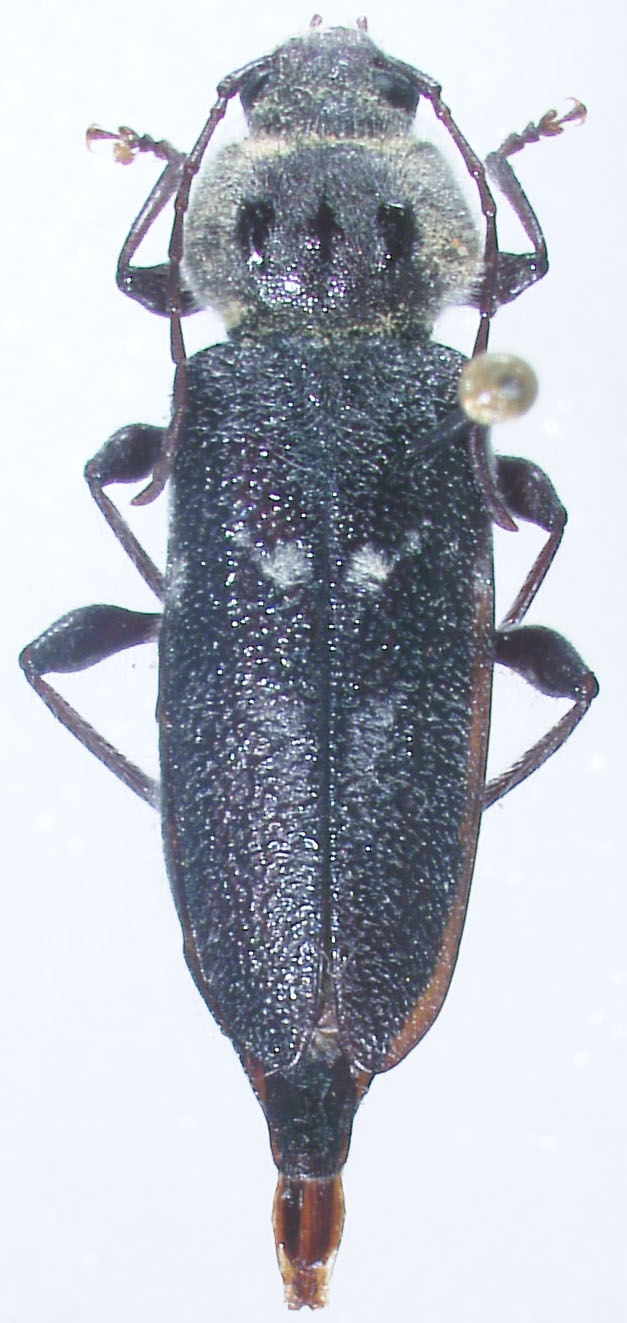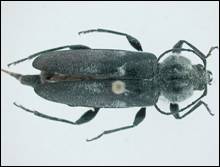Adult
Size
Variable, between 10 and 20 mm long and even up to 25 mm ; females are bigger than males.
Aspect
Elongate insects, slightly flat dorso-ventrally. Eleven-articled, filiform antennae (longer in males than in females), longer than the thorax but, unlike many other long-horn beetles, much shorter than the rest of the body.
The heart-shaped prothorax has two flat, shiny outgrowths on its dorsal face. Elytra have a rough aspect and have stripes and spots of whitish bristles, more or less visible depending on the conditions in which the individuals died and were kept, and on their colour. The females’ ovipositor is usually quite visible.
Colour
Light brown yellow to very dark brown, more or less shiny.


 Capricorne des maisons
Capricorne des maisons  House longhorn beetle Old house borer
House longhorn beetle Old house borer  Cerambicido de la madera labrada
Cerambicido de la madera labrada  Hausbockkäfer
Hausbockkäfer 


